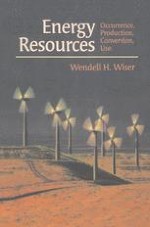2000 | Buch
Über dieses Buch
This book is directed primarily toward two types of readers. First, it is intended for use as a textbook for students in a liberal education course in science for non-science and non-engineering majors in college or univer sity. The technical level of presentation assumes no background in chemis try or physics on the part of the reader, and no science prerequisites or prior preparation are of concern. At the same time, elementary equations of chemistry and physics are included, particularly in relation to interconver sion of energy resources and utilization, for the benefit of the student with a more than passing interest in science who can learn much about these aspects of chemistry from equations presented in the book. Second, and considered to be of major concern and importance, it is intended for use as a reference book for teachers of science in the high schools and junior high schools. Because of the importance of energy in the daily life of the average citizen, a need is usually felt by the teacher at those levels to discuss various aspects of energy in daily life. However, often a source containing valid information is not available to the teacher. In the absence of a valid text, the teacher often resorts to information found in the press-information that is rarely accurate. The information presented in this book is soundly based in science, and in most cases the data presented are up-to-date as of the date of this writing.
Anzeige
